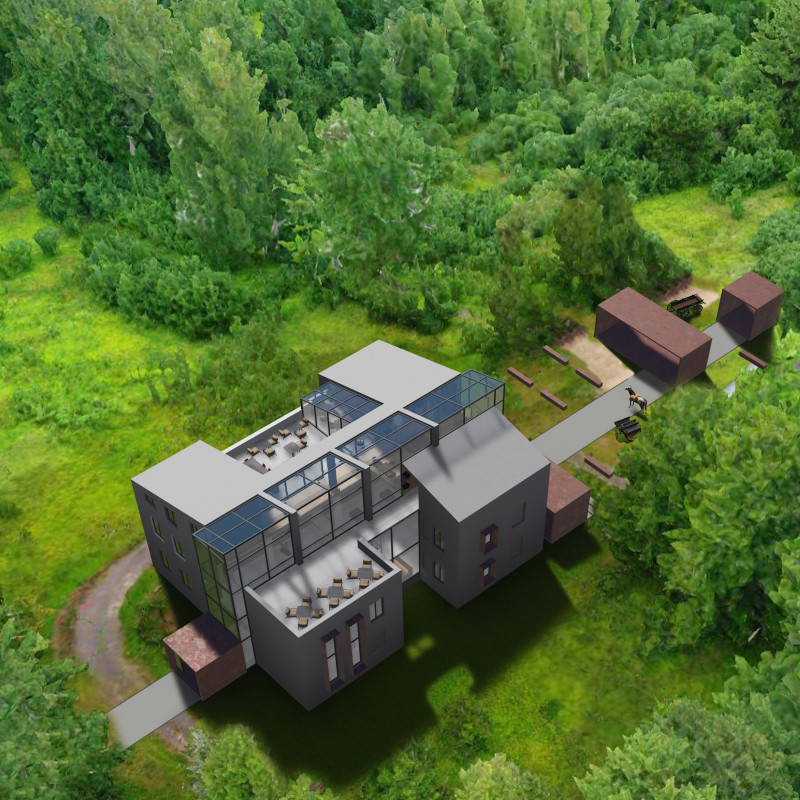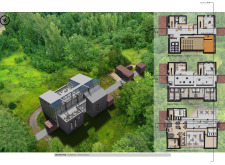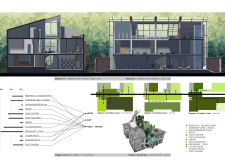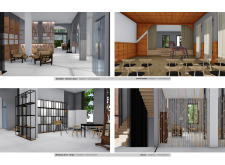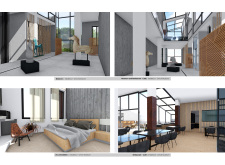5 key facts about this project
The architectural design prioritizes an open layout that fosters interaction among visitors, artists, and the landscape. The concept of merging indoor and outdoor experiences is articulated throughout the building, emphasizing transparency and fluidity. Key elements of the museum's design include a reception area, workshop spaces, exhibition galleries, artist studios, and a rooftop garden, all carefully organized to enhance usability while maintaining a strong connection to nature.
Sustainable Design Solutions
The design of the InsideOut Omul Museum is characterized by its innovative approach to sustainability and environmental integration. The project utilizes local materials such as concrete, glass, wood, steel, and brick, which reflect both modern architectural principles and traditional regional aesthetics. Large glass panels feature prominently in the façade, allowing for abundant natural light while offering unobstructed views of the surrounding landscape.
The museum incorporates green roofs and living walls that contribute to energy efficiency and support local biodiversity. This design strategy not only reduces the ecological footprint but also enriches the visitor experience by creating microclimates and fostering an immersive natural environment. The seamless blending of these elements positions the museum as a model for future cultural spaces that prioritize both functionality and environmental stewardship.
Engagement with Community and Art
Another defining aspect of the InsideOut Omul Museum is its commitment to community engagement through art and education. The workshop and studio spaces are designed to support artists in their creative processes while accommodating a diverse range of artistic practices. The multi-purpose auditorium and library provide venues for performances, lectures, and informal gatherings, enriching the cultural fabric of the community.
By facilitating a dialogue between art, nature, and the public, the museum aims to inspire creativity and collaboration among its visitors. The strategic layout encourages visitor flow and interaction, making it a versatile space that adapts to various events and functions. The integration of artistic facilities within the architectural design highlights the project’s ambition to foster a thriving artistic community.
For further insights into the InsideOut Omul Museum's architectural plans, sections, designs, and innovative ideas, readers are encouraged to explore the project presentation in detail. This provides an opportunity to understand the technical and conceptual aspects that define this architectural endeavor.


